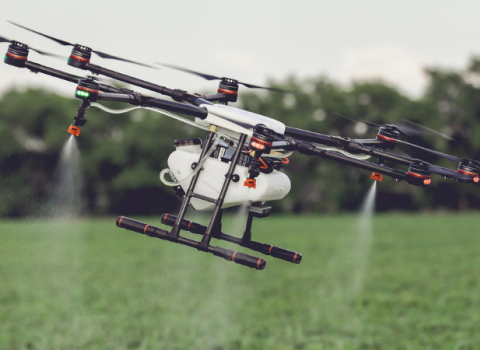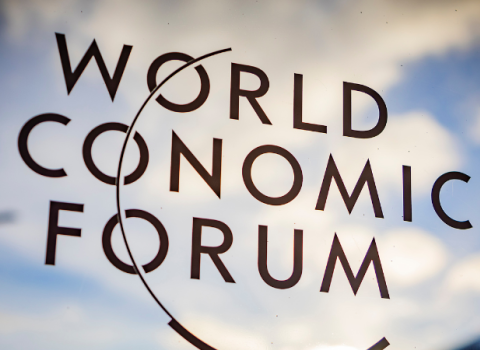
When India in 2005 adopted an amended patent law that complied with the Agreement on Trade Related Aspects of Intellectual Property Rights (TRIPS), it introduced a unique legal provision, Section 3(d). This stipulates that patents will not be granted to new forms or modifications of existing drugs unless they significantly add to their efficacy.
The legal war over Gleevec
Following rejection of its patent application for the cancer drug Gleevec, Novartis slapped a suit on the Indian government, challenging the constitutional validity of Section 3(d), which it terms arbitrary, vague, and not in compliance with TRIPS agreement. In a hearing on 22 February before the High Court in Madras, New Delhi counsel V.T. Gopalan defended Section 3(d), arguing that it neither violates the TRIPS agreement nor provides “unguided power” to patent controllers to reject applications on grounds that they are not inventions.
Replying to Novartis’s submissions, Gopalan said that there was nothing vague about the provision, which clearly states that an invention with a mere change of form cannot qualify for patent protection. “In fact, if granted, such a move would be arbitrary,” he said. He referred to TRIPS Articles 7 and 8 to emphasise that the accord allowed member states to adopt measures necessary to protect public health. He also rebuffed Novartis’s argument that the company was particularly targeted.
The Novartis counsel argued on 5 and 6 March, saying 3(d) is insignificant and weak. In case of an unfavourable judgment at the High Court, Novartis can appeal to the Supreme Court. Experts say in the event of no judgment even there, Novartis might seeking the Swiss government’s help to take India to the World Trade Organization dispute settlement panel.
It looks like the case could drag for a while. But whatever the outcome, it could have a far-reaching impact on drug prices.
Headed by Raghunath Mashelkar, former director general of the Council of Scientific and Industrial Research, the expert group submitted its report in December 2006 – but then had to withdraw it in late February faced with charges of plagiarism. After the report was placed online for public review, a public interest group, Lawyers Collective, discovered that several passages in the report were lifted from a paper published by the London-based IP Institute and funded by INTERPAT, a pharmaceutical industry body..
Using TRIPS’s flexibility
Stung by widespread criticism, Mashelkar cited “technical inaccuracies” that crept in during the initial draft and could not be “detected on time”. He has asked for three months to rewrite the report. But plagiarism apart, his findings have raised discontent elsewhere – the Indian Pharmaceutical Alliance (IPA, which contributes 90 percent of R&D expenditure in the industry) and several advocacy groups are demanding its rejection.
The expert group’s report suggested it would not be TRIPS compliant for India to limit patents only to new medical and chemical entities, adding that it is not in the national interest to do so. But organisations like the Indian Pharmaceutical Alliance counter that TRIPS leaves such flexibilities in the hands of World Trade Organisation member states. “India is free to determine the appropriate method of implementing its obligations under the TRIPS Agreement within the context of its own legal system,” says Alliance secretary general D.G. Shah in Mumbai.
Other recommendations in the report also go in favour of big pharma, which is increasingly tweaking existing molecules to get new drugs. A US Government Accountability Office report released in December 2006 showed that while annual R&D spending by the pharmaceutical industry rose by 147 per cent between 1993 and 2004 (from $16 billion to nearly $40 billion), the number of new drug applications to the US FDA increased only by 38 per cent. And two-thirds of these applications were for drugs derived from modifications of existing drugs.
So it was no surprise when the Swiss pharmaceutical company Novartis cited Mashelkar’s report in its ongoing case against the Indian government, where it is challenging Section 3(d), the provision used by the Indian patent office to reject the company’s patent application in January 2006 on the leukaemia drug Gleevec. (See Box)
While Novartis justifies its legal action as a fight for clarity in Indian patent law, Shah believes there is no ambiguity in this case. Gleevec is a pre-1995 molecule to which India is not obliged to grant protection even under TRIPS, says Shah. “Even [GlaxoSmithKline’s] Rosiglitazone (antidiabetic) patent was challenged, but the company had the common sense to not appeal the patent office decision. We have identified 21 more such molecules [for patent challenge] which are minor modifications of existing drugs,” Shah told Science|Business.
A section of the industry argues that the larger public interest means that India cannot afford to remove Section 3(d). In 2005, says Shah, the Pharmaceutical and Research Manufacturers of America complained that India infringed intellectual property rights on 208 molecules, amounting to a loss of $3.8 billion. “The Indian pharmaceutical market was worth $4.5 billion then,” he says, implying Indian healthcare would have been decimated if the big pharma had had its way.
Evolving IPR, changing stance
In anticipation of a stricter patent law, several Indian pharmaceutical companies have started investing in R&D earlier and some are close to launching innovative products. Now that some of its own IP could be in danger of losing protection under 3(d), the Indian industry is clearly divided.
While the idea of Section 3(d), to protect Indian citizens from “ever greening” of patents, is justified, definitions under this section of incremental innovations need modification, says Swati Piramal, director of strategic alliances at Nicholas Piramal, a Mumbai-based pharmaceutical company. “The definition of efficacy needs to be clarified and made transparent,” she insists.
Nicholas Piramal, which is working on a version of Gleevec, is worried that if “incremental innovations” are not granted protection under 3(d), then it will not be able to patent and launch this cancer drug in India. Several research-based companies like Wockhardt, Dr Reddy’s, Ranbaxy, and others have said that restricting patents to new chemical entities could hurt both the local as well as multinational firms.
Moreover, Indian companies using plant products to derive new drugs want patents to be introduced where a plant or known chemical entity finds a new use in medicine. “If this is not done, India’s own research may be grievously hurt. Indian companies have the best chance of producing a new, affordable (and patented) drug not only for India but for the world,” says Piramal.
It’s likely that many disagreements about definitions and how best to differentiate genuine innovations from frivolous ones will be sorted out once India releases guidelines governing the new Patent Act, says Shah. “The manuals are being written. Once completed, they will have detailed guidelines about each section,” he argues.
Meanwhile, the tug of war between two lobbies, one gunning for affordability, the other rooting for global opportunities (particularly in contract research and related outsourcing fields), looks set to continue.
Biotech leaders like Biocon chairman Kiran Mazumdar Shaw believes that India should grant patent protection for all types of innovation, in sync with global reality, and criticises Indian pharma for being “neither here nor there”.
But for an industry that has risen to garner a quarter of the global generics market on the back of 35 years of favourable domestic laws, it will be a while before market forces deepen the cracks to make India a part of level global playing field.





 A unique international forum for public research organisations and companies to connect their external engagement with strategic interests around their R&D system.
A unique international forum for public research organisations and companies to connect their external engagement with strategic interests around their R&D system.